Do you have a question about the Dell PowerEdge SC1425 and is the answer not in the manual?
Explains jumper function and configuration for circuit board modifications.
Details specific jumpers located on the system board for configuration.
Describes the various connectors found on the system board.
Details the connectors located on the riser card.
Procedure to clear system and setup passwords.
Details the serial port and its autoconfiguration features.
Describes pinouts for PS/2 keyboard and mouse ports.
Describes pinouts for the VGA video connector.
Details USB port pinouts and current limitations.
Describes connectors for integrated network interface cards.
Specifies standards for Ethernet network cabling.
Lists tools required for performing component replacement procedures.
Procedures for removing and installing the control panel assembly.
Details on the system board and procedures for its removal and installation.
Details front panel LEDs, buttons, and connectors for system status.
Lists system messages, their causes, and corrective actions.
Lists beep codes and their meanings for system diagnostics.
Addresses issues caused by software and system conflicts.
Details conflicts arising from interrupt request assignments.
Guides on accessing and using Dell's diagnostic tools.
Outlines the capabilities of the system diagnostic software.
Provides step-by-step instructions to run system diagnostics.
Details how to configure and run custom diagnostic tests.
Emphasizes crucial safety precautions before performing system servicing.
Troubleshooting steps for system power issues.
Steps to diagnose and resolve issues related to system memory modules.
Steps to diagnose and resolve processor-related errors.
Procedure for replacing the system's CMOS battery.
Procedures for removing and installing the power supply unit.
Information about memory module types and installation guidelines.
Procedure for removing and installing a system processor.
Procedures for removing and installing the optical drive.
How to set the system's boot order and select the boot device.
Information on installing SATA and SCSI hard drives.
Steps to follow for obtaining technical assistance.
Procedure for returning items for warranty repair or credit.
Preparation steps required before contacting technical support.
Methods and addresses for contacting Dell support.
Explains jumper function and configuration for circuit board modifications.
Details specific jumpers located on the system board for configuration.
Describes the various connectors found on the system board.
Details the connectors located on the riser card.
Procedure to clear system and setup passwords.
Details the serial port and its autoconfiguration features.
Describes pinouts for PS/2 keyboard and mouse ports.
Describes pinouts for the VGA video connector.
Details USB port pinouts and current limitations.
Describes connectors for integrated network interface cards.
Specifies standards for Ethernet network cabling.
Lists tools required for performing component replacement procedures.
Procedures for removing and installing the control panel assembly.
Details on the system board and procedures for its removal and installation.
Details front panel LEDs, buttons, and connectors for system status.
Lists system messages, their causes, and corrective actions.
Lists beep codes and their meanings for system diagnostics.
Addresses issues caused by software and system conflicts.
Details conflicts arising from interrupt request assignments.
Guides on accessing and using Dell's diagnostic tools.
Outlines the capabilities of the system diagnostic software.
Provides step-by-step instructions to run system diagnostics.
Details how to configure and run custom diagnostic tests.
Emphasizes crucial safety precautions before performing system servicing.
Troubleshooting steps for system power issues.
Steps to diagnose and resolve issues related to system memory modules.
Steps to diagnose and resolve processor-related errors.
Procedure for replacing the system's CMOS battery.
Procedures for removing and installing the power supply unit.
Information about memory module types and installation guidelines.
Procedure for removing and installing a system processor.
Procedures for removing and installing the optical drive.
How to set the system's boot order and select the boot device.
Information on installing SATA and SCSI hard drives.
Steps to follow for obtaining technical assistance.
Procedure for returning items for warranty repair or credit.
Preparation steps required before contacting technical support.
Methods and addresses for contacting Dell support.
| Number of Processors Supported | 2 |
|---|---|
| Storage | SATA or SCSI |
| Processor | Intel Xeon |
| Memory | Up to 16GB DDR2 |
| Drive Bays | 4 x 3.5-inch |
| Network | Dual Gigabit Ethernet |
| Operating System Support | Windows Server, Red Hat Linux, SUSE Linux |
| Form Factor | 1U Rackmount |
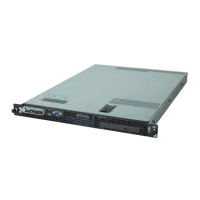

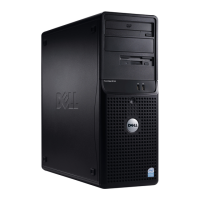

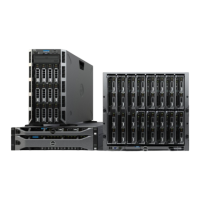
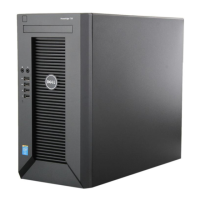

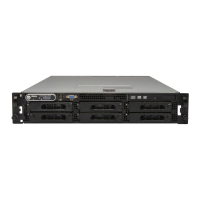
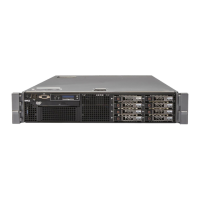
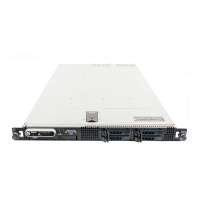

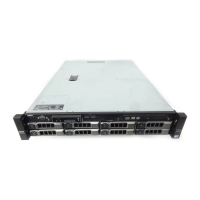
